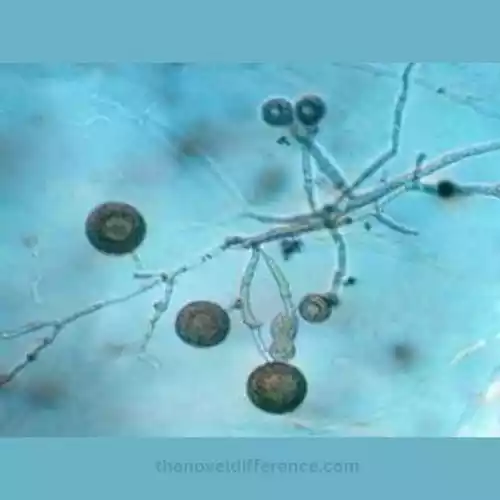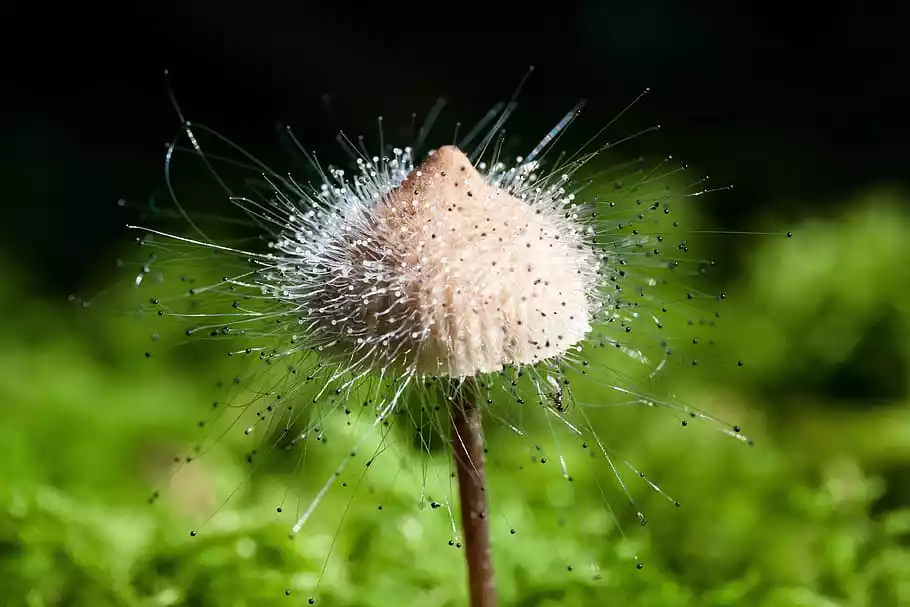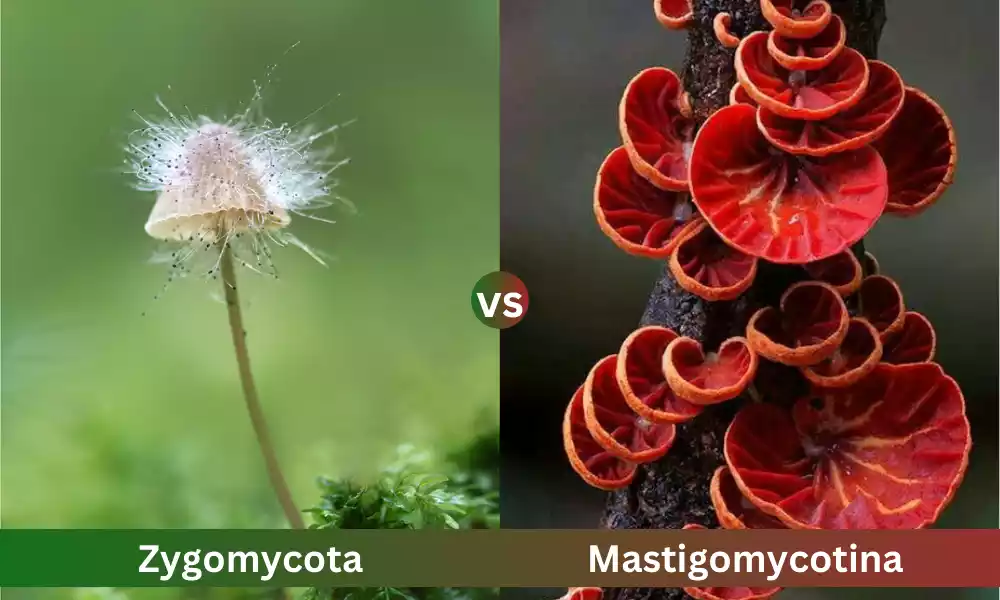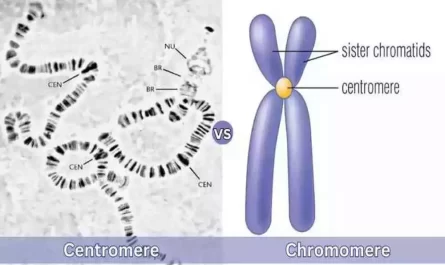Fungi are special organisms in the Fungi Kingdom, and they come in different groups. Two of these groups are Mastigomycotina and Zygomycota.
Mastigomycotina is a diverse bunch of fungi that like hanging out in watery places. They’re known for making cells with tiny whip-like tails, which help them move around. They also have these root-like structures called rhizoids.
Zygomycota, on the other hand, are fungi that love making tough, round spores known as zygospores during their mating process. These spores act like armor, protecting them and helping them spread around.
In the fungal world, there are other groups too, like the ascomycota, basidiomycota, and deuteromycota, each with their own unique ways of doing things. For example, some make sac-like structures, some make club-shaped ones, and others are known for being imperfect, only having asexual or mycelial states.
These diverse fungi play different roles in nature, from breaking down stuff in the soil to causing infections, and they’re a fascinating part of the natural world.
What is Mastigomycotina?
Mastigomycotina is a group of fungi that is characterized by their flagellated cells and their unique lifestyle.
Here are some key features of Mastigomycotina:
- Flagellated Cells: One of the defining characteristics of Mastigomycotina is the presence of flagellated cells. These are cells that have whip-like tails (flagella) that enable them to move through water. The flagella play a crucial role in the mobility of these fungi.
- Aquatic Habitat: Mastigomycotina fungi are typically found in aquatic environments, such as freshwater bodies like lakes, ponds, and streams. Their flagellated cells help them navigate through the water, making them well-suited for this habitat.
- Saprophytic or Parasitic: Mastigomycotina fungi can exhibit both saprophytic and parasitic lifestyles. Some species are saprophytes, meaning they obtain nutrients from decomposing organic matter in their environment. Others are parasitic, which means they live off other organisms, often causing diseases.
- Reproduction: Mastigomycotina fungi reproduce through the formation of both asexual and sexual spores. Asexual spores are produced by mitosis, while sexual reproduction involves the fusion of specialized sexual structures to produce new spores.
- Examples: Specific examples of Mastigomycotina fungi include members of the Chytridiomycota, a class within this group. Chytrid fungi are known for their role in amphibian diseases, and they have been the subject of ecological research due to their impact on amphibian populations.

Mastigomycotina fungi have a unique place in the fungal kingdom, thanks to their flagellated cells and their preference for aquatic environments. They play important roles in ecosystems, both as decomposers and as potential pathogens, and their study is vital for understanding fungal diversity and ecology.
Morphology and life cycle of Mastigomycotina
Mastigomycotina, a subgroup of fungi, have distinctive morphology and life cycles that set them apart from other fungal groups.
Let’s explore their morphology and life cycle in a simplified manner:
Morphology: Mastigomycotina fungi display some common characteristics in their morphology:
- Flagellated Cells: One of the most distinguishing features is the presence of flagellated cells. These cells have whip-like structures called flagella, which allow them to move through water. The flagella are essential for their mobility in aquatic environments.
- Rhizoids: Some members of Mastigomycotina have rhizoids, which are root-like structures that anchor the fungus to substrates or surfaces. Rhizoids help these fungi stay in place while they grow and reproduce.
- Sporangium: Sporangia are specialized structures that produce spores. In Mastigomycotina, sporangia are responsible for creating both asexual and sexual spores. These spores play a crucial role in their life cycle.
Life Cycle: The life cycle of Mastigomycotina typically involves both asexual and sexual reproduction, and it can be summarized as follows:
- Asexual Reproduction:
- Asexual spores are produced within sporangia. These spores are then released into the environment.
- Asexual reproduction helps these fungi spread and establish themselves in new locations. It allows for rapid colonization and growth.
- Sexual Reproduction:
- In the sexual phase, specialized sexual structures, such as gametangia, form. These structures are responsible for the fusion of gametes.
- Fusion of gametes results in the formation of a zygote, which subsequently develops into a zygospore.
- The zygospore is a characteristic resistant structure, and it can withstand harsh conditions and act as a survival structure.
- Under suitable conditions, the zygospore can undergo germination to form new flagellated cells, restarting the life cycle.
The combination of asexual and sexual reproduction, along with the presence of flagellated cells, makes the life cycle of Mastigomycotina fungi unique within the fungal kingdom. This adaptability to different reproductive strategies and their aquatic habitat contribute to their ecological significance.
Morphology and life cycle of Mastigomycotina
Mastigomycotina, a subgroup of fungi, have distinctive morphology and life cycles that set them apart from other fungal groups. Let’s explore their morphology and life cycle in a simplified manner:
Morphology: Mastigomycotina fungi display some common characteristics in their morphology:
- Flagellated Cells: One of the most distinguishing features is the presence of flagellated cells. These cells have whip-like structures called flagella, which allow them to move through water. The flagella are essential for their mobility in aquatic environments.
- Rhizoids: Some members of Mastigomycotina have rhizoids, which are root-like structures that anchor the fungus to substrates or surfaces. Rhizoids help these fungi stay in place while they grow and reproduce.
- Sporangium: Sporangia are specialized structures that produce spores. In Mastigomycotina, sporangia are responsible for creating both asexual and sexual spores. These spores play a crucial role in their life cycle.
Life Cycle: The life cycle of Mastigomycotina typically involves both asexual and sexual reproduction, and it can be summarized as follows:
- Asexual Reproduction:
- Asexual spores are produced within sporangia. These spores are often released into the environment.
- Asexual reproduction helps these fungi spread and establish themselves in new locations. It allows for rapid colonization and growth.
- Sexual Reproduction:
- In the sexual phase, specialized sexual structures, such as gametangia, form. These structures are responsible for the fusion of gametes.
- Fusion of gametes results in the formation of a zygote, which subsequently develops into a zygospore.
- The zygospore is a characteristic resistant structure, and it can withstand harsh conditions and act as a survival structure.
- Under suitable conditions, the zygospore can undergo germination to form new flagellated cells, restarting the life cycle.
The combination of asexual and sexual reproduction, along with the presence of flagellated cells, makes the life cycle of Mastigomycotina fungi unique within the fungal kingdom. This adaptability to different reproductive strategies and their aquatic habitat contribute to their ecological significance.
What is Zygomycota?
Zygomycota is a division or phylum of fungi within the Kingdom of Fungi. These fungi are known for their characteristic sexual reproductive structures called zygospores.
Here are some key features of Zygomycota:
- Zygospores: The defining feature of Zygomycota is their formation of zygospores during sexual reproduction. Zygospores are thick-walled, resistant spores that are produced when two specialized sexual structures, called zygosporangia, come into contact and fuse. This fusion of nuclei leads to the development of a zygospore, which is essential for their life cycle.
- Asexual Reproduction: In addition to sexual reproduction, many Zygomycota fungi can also reproduce asexually. They produce sporangia, which release sporangiospores. These spores can give rise to new fungal individuals without the involvement of sexual reproduction.
- Coenocytic Hyphae: Zygomycota fungi have coenocytic hyphae, which means their hyphal cells lack septa (crosswalls). This allows for the rapid flow of cytoplasm and nutrients within the fungal structure.
- Saprophytic Lifestyle: Many Zygomycota species are saprophytic, which means they obtain their nutrients from decaying organic matter. They play important roles in the decomposition of organic material in various ecosystems.
- Rapid Growth: Zygomycota fungi are known for their fast growth rates, which are facilitated by their coenocytic hyphae and the ability to produce a large number of asexual spores in a short period.
- Habitat: Zygomycota fungi can be found in a variety of habitats, including soil, decaying organic matter, and symbionts in mycorrhizal associations with plants.
- Economic and Ecological Significance: Some Zygomycota fungi can be pathogenic to plants, causing diseases like root rot, while others are used in biotechnology and industry for processes like fermentation and the production of certain enzymes.

Zygomycota is a diverse group within the fungal kingdom, and its members exhibit a wide range of ecological and biological roles. The formation of zygospores and the coenocytic hyphal structure are key characteristics that set Zygomycota apart from other fungal divisions.
Morphology and life cycle of Zygomycota
The morphology and life cycle of Zygomycota, a division of fungi, are distinct and fascinating.
Here’s a simplified explanation of their morphology and life cycle:
Morphology: Zygomycota fungi have several unique morphological features:
- Coenocytic Hyphae: The hyphae of Zygomycota are coenocytic, which means they lack septa (crosswalks) between their cells. This allows for the free flow of cytoplasm and nutrients throughout the fungal structure.
- Sporangium: These fungi produce asexual spores (sporangiospores) within specialized structures called sporangia. These sporangia are often raised above the substrate on stalks, making them visible.
- Rhizoids: Zygomycota fungi typically have root-like structures called rhizoids, which anchor the fungal body to substrates and help with nutrient absorption.
Life Cycle: The life cycle of Zygomycota is distinctive and involves both asexual and sexual reproduction:
- Asexual Reproduction:
- Asexual reproduction begins with the formation of sporangia. These sporangia contain sporangiospores.
- As the sporangia mature, they burst open, releasing the sporangiospores into the environment. These spores can disperse and give rise to new fungal individuals.
- Sexual Reproduction:
- In sexual reproduction, Zygomycota fungi form specialized sexual structures known as zygosporangia.
- Two different mating strains of the fungus come into contact and release gametangia.
- Gametangia of opposite mating types fuse, and this fusion results in the formation of a zygospore.
- The zygospore is a thick-walled, resistant structure that can survive adverse conditions, such as desiccation and extreme temperatures.
- Under favorable conditions, the zygospore undergoes germination, producing new hyphae, and completing the life cycle.
It’s important to note that while Zygomycota fungi exhibit this general life cycle, there can be variations among different species within the division. This ability to reproduce both asexually and sexually, along with the formation of resilient zygospores, contributes to the adaptability and ecological success of Zygomycota in various environments.
Examples and notable representatives of Zygomycota
Zygomycota is a diverse group of fungi with a wide range of species.
Here are a few examples of notable representatives within this division:
- Rhizopus stolonifer: Commonly known as black bread mold, Rhizopus stolonifer is one of the most recognizable members of Zygomycota. It’s a fast-growing fungus that often appears on bread, fruits, and other decaying organic matter. This species is used in laboratories for studying fungal biology and reproduction.
- Mucor sp.: Mucor is a genus of Zygomycota fungi that includes various species found in soil, compost piles, and decaying vegetation. Some Mucor species are used in the production of traditional fermented foods like tempeh and tofu.
- Pilobolus spp.: Pilobolus fungi are known for their unique method of spore dispersal. These fungi grow on herbivore dung, and their sporangia can shoot their spores several meters away, aiding in the distribution of spores to new environments.
- Entomophthorales: This order of Zygomycota fungi consists of entomopathogenic fungi, which are parasitic on insects. They infect and kill their insect hosts, making them valuable for biological pest control in agriculture.
- Mycorrhizal Zygomycetes: Some Zygomycota species form mycorrhizal associations with plants, aiding in nutrient uptake and enhancing plant growth. One example is Rhizophagus irregularis, which plays a role in mycorrhizal symbiosis with many plants.
- Dung-Inhabiting Zygomycota: Certain Zygomycota fungi inhabit herbivore dung, where they help break down organic matter. These fungi play a crucial role in nutrient recycling in ecosystems.
These examples represent just a fraction of the diversity within Zygomycota. The division includes a wide range of species with various ecological roles, including saprophytic, parasitic, and symbiotic relationships with plants and other organisms. Zygomycota fungi are important contributors to ecosystem functioning and have both ecological and practical significance.
Mastigomycotina and Zygomycota in the comparison chart
Here’s a simplified comparison chart of key differences between Mastigomycotina and Zygomycota:
| Characteristic | Mastigomycotina | Zygomycota |
|---|---|---|
| Flagellated Cells | Present in some species, allowing mobility in water. | Absent, no flagellated cells. |
| Habitat | Mainly aquatic, found in freshwater environments. | Terrestrial, inhabiting various substrates such as soil, decaying matter, and dung. |
| Rhizoids | Some species may have rhizoids for anchoring. | Rhizoids are more commonly present, aiding in attachment and nutrient absorption. |
| Spore Production | Asexual and sexual spore production. | Both asexual and sexual spore production. |
| Asexual Spores | Produced in sporangia. | Also produced in sporangia. |
| Sexual Reproduction | Involves specialized sexual structures and the formation of zygospores. | Zygomycota is named for the characteristic formation of zygospores during sexual reproduction. |
| Saprophytic or Parasitic | Variable may exhibit both saprophytic and parasitic lifestyles. | Mostly saprophytic, with some species parasitic on insects or plants. |
| Coenocytic Hyphae | Coenocytic hyphae, allowing rapid transport of nutrients. | Coenocytic hyphae, facilitating rapid growth and nutrient flow. |
| Ecological Roles | Diverse ecological roles, including decomposition and potential parasitism. | Important decomposers, mycorrhizal symbionts, and potential pathogens. |
This chart highlights some of the key differences and similarities between Mastigomycotina and Zygomycota, with a focus on their morphology, habitat, reproduction, and ecological roles.
Conclusion
Mastigomycotina as well as Zygomycota have two different categories of fungi that have distinct distinctions in their habitat, structure and reproduction patterns, morphology, and uptake of nutrients.
Mastigomycotina is mostly aquatic and utilizes flagellated zoospores to facilitate mobility, Zygomycota is found in diverse environments and produces Zygosporangia-enclosed spores.
Understanding the distinctions between these fungal types aids in understanding their ecological functions and their impact on the environment. The two mastigomycotina and Zygomycota play a role in the health of ecosystems by their role in decomposition as well as the cycle of nutrients.
So, next time you come across fungi in nature you will be able to recognize the uniqueness and diversity that is Mastigomycotina as well as Zygomycota. Enjoy exploring!




